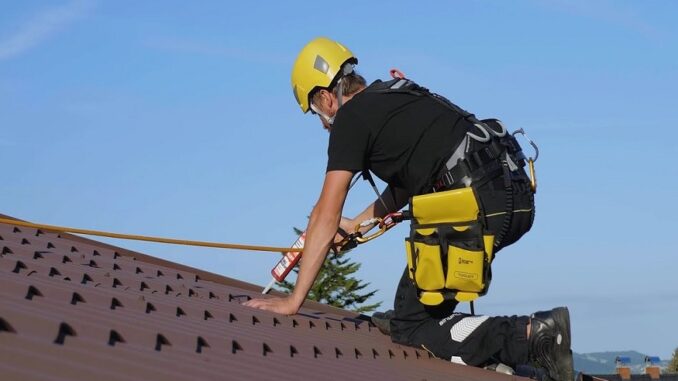
A fall protection system consists of various components, including anchor points, lifelines, and lanyards. The anchor points must be securely attached to the structure to ensure stability. Lifelines and lanyards connect the safety harness to the anchor points, allowing workers to move freely while still being protected from falls.
Roof safety equipment is essential for workers who perform tasks at heights, such as construction workers, roofers, and maintenance personnel. Working on rooftops involves significant risks, including the potential for falls and accidents. Properly selected and used safety gear is crucial to prevent injuries and ensure the well-being of workers. Here are some must-have roof safety equipment for workers at heights:
Safety Harness: A safety harness is the cornerstone of roof safety equipment. It is worn by workers and connected to a secure anchor point using a lanyard or lifeline. In the event of a fall, the safety harness distributes the force across the body, reducing the risk of injury. Full-body harnesses are recommended for complete upper body support.
Roof Edge Protection: Guardrails or Safety Nets: Guardrails installed around the perimeter of the roof provide a physical barrier that prevents accidental falls. Safety nets, if used, are positioned below the work area to catch workers in case of a fall, further reducing the risk of injury.
Roof Anchor Points: Roof anchor points are fixed points on the roof structure to which lifelines and lanyards can be attached. It is essential to have adequate anchor points that meet safety standards and are capable of supporting the weight of a falling worker.
Fall Arrest Systems: Fall arrest systems are devices that stop a fall in progress and limit the distance a worker falls. These systems may include energy-absorbing lanyards or self-retracting lifelines, preventing sudden jolts when arrested.
Personal Alert Devices: Personal alert devices, such as fall alarms or personal locator beacons, can be integrated into safety harnesses or worn separately to alert others in the event of a fall or emergency.
Roof Safety Signage and Training Materials: Clear and visible safety signage should be placed on the rooftop, indicating potential hazards and safety procedures. Proper training materials and educational resources should also be provided to workers to ensure they understand how to use safety equipment correctly.
roof safety equipment is a vital investment for protecting workers at heights and preventing accidents on rooftops. Safety harnesses, fall protection systems, roof edge protection, and personal protective equipment are just a few examples of the must-have gear for workers at elevated heights. Employers should prioritize providing comprehensive training on the proper use of safety equipment and ensure that all workers are equipped with the necessary gear before undertaking any work on rooftops. By taking these precautions, employers can create a safe working environment and significantly reduce the risk of falls and injuries for workers in elevated positions.

Leave a Reply
You must be logged in to post a comment.